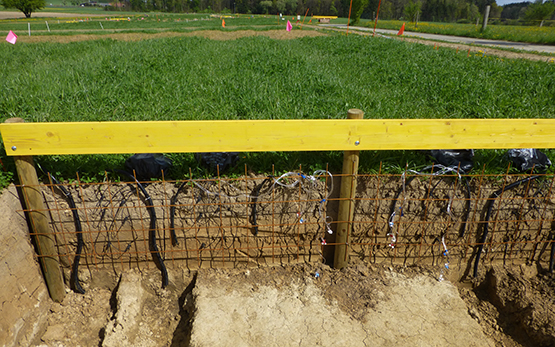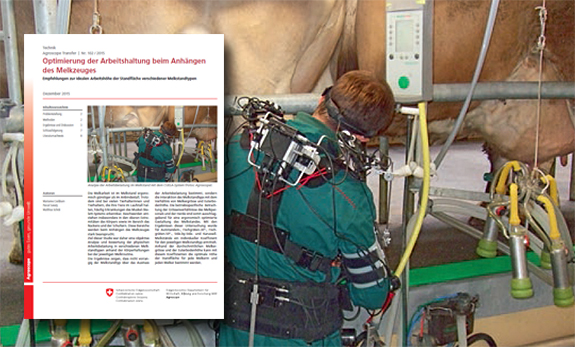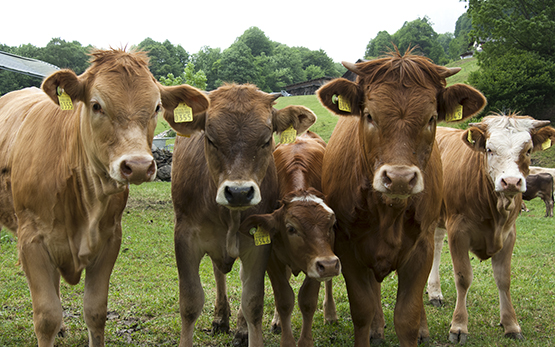Huang C., Ramadan Q., Wacker J.B., Tekin H.C., Ruffert C., Vergères G., Silacci P., Gijs M.A.M.
Microfluidic chip for monitoring Ca2+ transport through a confluent layer of intestinal cells.
RSC Advances, 4, 2014, 52887-52891.
Vergères G., Gille D.
Nutri(epi)genomik.
In: Kulturen der Epigenetik: Vererbt, codiert, übertragen. Publ. Lux V., Richter J.T., Berlin, Boston: De Gruyter. 2014, 1-9.
Schwander F., Kopf-Bolanz K. A., Buri C., Portmann R., Egger L., Chollet M., McTernan P. G., Piya M. K., Gijs M. A. M., Vionnet N., Pralong F., Laederach K., Vergères G.
A dose-response strategy reveals differences between normal-weight and obese men in their metabolic and inflammatory responses to a high-fat meal.
The Journal of Nutrition, 144, (10), 2014, 1517-1523.
Sagaya F.M., Hacin B., Tompa G., Ihan A., Spela S., Cerne M., Hurrell R.F., Matijasic B.B., Rogelj I., Vergères G.
Lactobacillus gasseri K7 modulates the blood cell transcriptome of conventional mice infected with Escherichia coli O157:H7.
Journal of Applied Microbiology, 116, (4), 2014, 1282-1296.
Kopf-Bolanz K., Schwander F., Gijs M., Vergères G., Portmann R., Egger L.
Impact of milk processing on the generation of peptides during digestion.
International Dairy Journal, 35, (2), 2014, 130-138.
Vergères G.
Nutrigenomics - Linking food to human metabolism.
Trends in Food Science & Technology, 31, (1), 2013, 6-12.
Ramadan Q., Jafarpoorchekab H., Huang C., Silacci P., Carrara S., Koklü G., Ghaye J., Ramsden J., Ruffert C., Vergères G., Gijs M.A.M.
NutriChip: nutrition analysis meets microfluidics.
Lab on a Chip, 13, (2), 2013, 196-203.
Ghaye J., Kamat M.A., Corbino-Giunta L., Silacci P., Vergères G., De Micheli G., Carrara S.
Image thresholding techniques for localization of sub-resolution fluorescent biomarkers.
Cytometry Part A, 83, (11), 2013, 1001-1016.
Bär C., Kopf-Bolanz K., Schwander F., Vergères G., Egger L., Portmann R.
Characterization of standard milk protein samples for the evaluation of in-vitro digestion models.
In: 2nd International Conference on Food Digestion. 6-8 March, Publ. COST Action FA 1005 Infogest, Madrid. 2013, 1.
Vergères G., Bogicevic B., Buri C., Carrara S., Chollet M., Corbino-Giunta L., Egger C., Gille D., Kopf-Bolanz K., Laederach K., Portmann R., Ramadan Q., Ramsden J., Schwander F., Silacci P. and others
The NutriChip project – translating technology into nutritional knowledge.
British Journal of Nutrition, 108, (5), 2012, 762-768.
Sagaya F.M., Hurrell F., Vergères G.
Postprandial blood cell transcriptomics in response to the ingestion of dairy products by healthy individuals.
Journal of Nutritional Biochemistry, 23, (12), 2012, 1701-1715.
Walther B., Gille D., Vergères G.
Nutrigenomik – State of the Art.
Schweizer Zeitschrift für Ernährungsmedizin, (1), 2012, 16-20.
Kopf-Bolanz K., Schwander F., Gijs M., Vergères G., Portmann R., Egger L.
Validation of an in vitro digestive system for studying macronutrient decomposition in humans.
The Journal of Nutrition, 142, (2), 2012, 245-250.
Ramadan Q., Jafarpoorchekab H., Bolanz K., Schwander F., Egger C., Portmann R., Silacci P., Carrara S., Ramsden J., Vergères G., Gijs M.A.M.
Nutrichip: an integrated microfluidic system for in vitro investigation of the immunemodulatory function of dairy products.
In: Proceedings of the 15th International Conference on Miniaturized Systems for Chemistry and Life Sciences (MicroTAS). October 2-6, Seattle, Washington, USA. 2011, 650-652.
Vergères G., Sagaya F., Matijašić B.B., Chollet M., Eugster-Meier E., Hacin B., Hurrell R.F, Rogelj I., Walther B.
A nutrigenomic strategy to assess the physiological properties of fermented dairy products.
Agroscope, Agroscope. 2010.
Sagaya F., Walther B., Chollet M., Hurrell R., Vergères G.
Effect of milk fermentation on gene expression in human blood cells.
Agroscope, Agroscope. 2010.
Vergères G.
Un voyage gastro-moléculaire à travers la nutrigénomique.
Nutrigénomique, 2010, 1-28.
Guggisberg D., Vergères G., Chollet M.
Gesund und gleichzeitig cremig.
Alimenta, (15), 2010, 27-29.
Vergères G., Sagaya F.
Wie reagieren unsere Gene auf die Ernährung?
In: Forschung und Ernährung - Ein Dialog. 1. Auflage, Publ. Esther V. Schären-Züblin, Vevey: Alimentarium, Weinheim: Wiley-Blackwell. 2009, 225-230.
other Languages:
french
Vergères G.
From molecular nutrition to nutritional systems biology.
In: Epigenetics and human health: linking hereditary, environmental and nutritional aspects. 2009, Publ. E. A. Miller ... [et al.], Wiley-VCH, London. 2009, 127-140.









